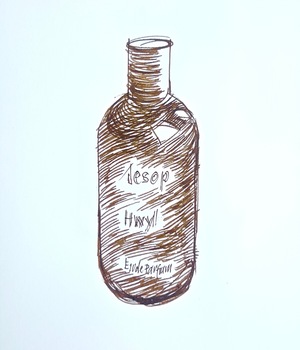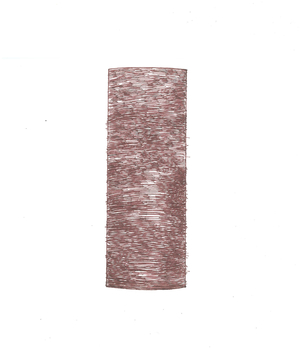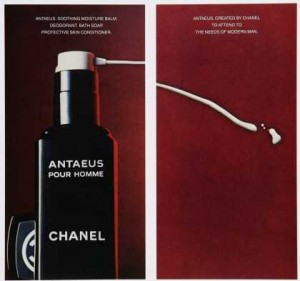Tagged With ‘thyme’
Aesop
Hwyl
1 December, 2017
 Since 2004, when its first store opened in the corner of a Melbourne car-park, Aesop has developed into a global brand, thanks to its simple but sensual products, individually designed boutiques and large injections of private capital (most recently from Natura Cosméticos, the Brazilian version of Avon, which took full control of the brand in 2016).
Since 2004, when its first store opened in the corner of a Melbourne car-park, Aesop has developed into a global brand, thanks to its simple but sensual products, individually designed boutiques and large injections of private capital (most recently from Natura Cosméticos, the Brazilian version of Avon, which took full control of the brand in 2016).
Given that fragrance was always part of its products’ appeal (founder Dennis Paphitis got the original idea after adding essential oils to hair bleach to disguise the smell of ammonia), it’s no surprise that Aesop has flirted with perfume over the years. In 2005 it launched Marrakech, followed by Mystra in 2006, both of which were subsequently discontinued, though they still have their fans – perfumer Paul Schutze still has his roller-ball version of Marrakech, which he suspects was a commercial disaster not because of the fragrance, which he loves, but because ‘you use so little scent with the roller-ball that you never need to buy another one’.
In 2014 Aesop returned to perfume with Marrakech Intense, followed by Tacit in 2015 and now, in 2017, Hwyl. Though the name is Welsh, the scent is inspired by smoke floating through a Japanese forest of hiba cypress trees (the conifer Thujopsis dolabrata, also known as Hiba arborvitae), and that’s pretty much what you smell when you first put it on. The formula, which was devised by French perfumer Barnabé Fillion (who previously contributed to Marrakech Intense), also includes a good dose of thyme with hints of spice, moss and vetiver.
Hywl is my favourite of the three ‘new’ Aesop perfumes so far, though I think it’s rather overpriced at £83 for 50ml, especially as it doesn’t last for more than two or three hours on my skin (Aesop kindly sent me a bottle to review). It enters an increasingly crowded field of perfumes based around the smells of incense and smoke, most of them aimed at men, and while it’s nice of its kind, I can’t say that it’s especially original. But then perhaps Aesop knows that its customers aren’t looking for ground-breaking scents: just something that’s easy to wear and fairly on-trend, which Hwyl certainly is.
Chanel
Antaeus
8 December, 2014
 When I first started thinking about The Sniff Box, I wondered how I could make it look different from other perfume blogs. I knew I’d have no problem with the overall look, thanks to my super-talented friend, Leanda Ryan, whose design perfectly reflects the idea of ‘perfume in plain English’.
When I first started thinking about The Sniff Box, I wondered how I could make it look different from other perfume blogs. I knew I’d have no problem with the overall look, thanks to my super-talented friend, Leanda Ryan, whose design perfectly reflects the idea of ‘perfume in plain English’.
But illustrating individual perfumes is a problem, as you’ll gather if you look at other perfume sites on the interweb. The obvious thing to do is to use a ‘pack shot’, generally supplied by the brand in question: it’s what the brands like as that’s how they want you to see their scent, but how many times do you want to see the same cheesy photograph?
The trouble is, if you don’t use a photo of the bottle, what can you use instead? How do you illustrate something you can smell but can’t actually see? It’s interesting to check out what other people come up with, but given that few bloggers can afford to commission photography or illustration, they’re generally stuck with stock shots of things like perfume ingredients – a sprig of lavender, say, or a twist of lemon – which are as cheesy as the pack shots they’re trying to avoid.
It took a while, but finally it struck me: since I can draw, after a fashion, why not draw my own illustrations? And that’s how I began.
All of which is a roundabout way of saying that, when I was trying to draw my bottle of Antaeus this morning, it gradually dawned on me that it is one of the most beautiful perfume bottles I know. It’s also one of the simplest: a tall, square, black-glass container that, if you took away the classy sans-serif Chanel lettering, would bear a more-than-passing resemblance to sinister monolith in 2001: A Space Odyssey.
Designed (or at least commissioned) by Chanel’s long-standing artistic director, Jacques Helleu, and launched in 1981, Antaeus was a kind of dark-side twin to the brand’s only other men’s fragrance at that time, Pour Monsieur (launched way back in 1955). Their bottles may be almost identical in shape, but Pour Monsieur is as cool and transparent as Antaeus is brooding and mysterious, and that reflects the fact that they’re very different scents.
Pour Monsieur is a refined, impeccably discreet fragrance: perfect in its way but perhaps (dare one whisper it?) just a tiny bit dull. Antaeus, by contrast, is a dark sexy scent that was launched just as the disco era crashed and burned: the same year Ian Schrager and Steve Rubell sold out of Studio 54 and the big disease with a little name first reared its ugly head.
Antaeus (the scent) was created by Chanel’s much-fêted in-house perfumer, Jacques Polge, in collaboration with François Damachy, now head of fragrance at Dior). As suggestive as Pour Monsieur is safe, its sexiness comes from castoreum, derived from a secretion extracted from beaver wee (I kid you not), which despite its revolting origins becomes, after careful treatment, a potent perfume ingredient, with its musky, leathery smell.
It’s a warm, slightly spicy leather scent, with a lot of Mediterranean herbs, most notably clary sage and thyme, that most of us would probably associate with hot, rocky mountainsides in southern France and Greece. My nose isn’t yet sensitive enough to identify them, but it also apparently contains labdanum (derived from two different species of Cistus, another Mediterranean shrub), as well as sandalwood and patchouli, which presumably add to the slightly hippyish warmth of the scent.
 Antaeus became a big best-seller in the early 1980s initially, it seems, among gay men, and with its hints of sex and leather it’s easy to see why. Chanel itself tapped into this trend in 1983 with a delightfully pervy advert (pictured), whose subtext I can leave to your imagination.
Antaeus became a big best-seller in the early 1980s initially, it seems, among gay men, and with its hints of sex and leather it’s easy to see why. Chanel itself tapped into this trend in 1983 with a delightfully pervy advert (pictured), whose subtext I can leave to your imagination.
But gay men, as we’ve often been told, are classic early adopters, and these days Antaeus is just as likely to attract anyone who enjoys a rich and complex scent. It’s long been one of my favourites, for its warmth and easy appeal, but I love its darker origins too: sex (and history) in a bottle.